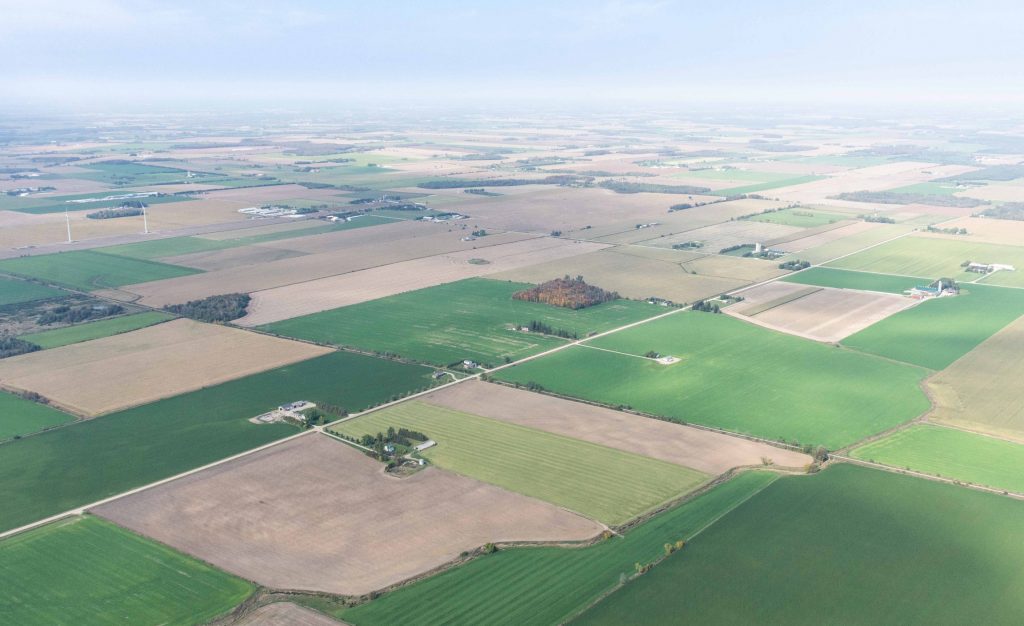WELLINGTON COUNTY – Though it covers only 0.2 per cent of land in Ontario, Wellington County produces 5% of the province’s field crops, and a significant portion of animal agriculture too.
That’s according to a recent report from the Wellington Federation of Agriculture (WFA).
“This report confirms our knowledge that the farmers in Wellington County are leading the way in agricultural production in Ontario,” stated county warden Andy Lennox in a press release.
“It also reinforces that our soils are a driving force behind the vibrant agri-food system in the county.”
The county is home to a total of 418,296 acres of field crops, producing 4% of the province’s soybeans, 4% of its grain corn, and 7% of its winter wheat.
Agricultural acreage in Wellington County makes up:
- 10% of Ontario’s corn silage acreage;
- 9% of its mixed grain acreage; and
- 8% of its barley acreage.
The county is also home to:
- 12% of Ontario’s dairy farms;
- 10% of its poultry and egg farms; and
- 8% of its hog and pig farms.
More than 12,260 people work in agriculture in Wellington County, contributing $2.8 billion to Canada’s gross domestic product (GDP) and $841 million to Ontario’s GDP.
In 2021, the county produced 5.8% of Ontario’s farm cash receipts.

Wellington County only accounts for 0.2 per cent of the land in Ontario, but a new study conducted by Wilton Consulting Group and Serecon shows county carries far more than its weight of the province’s agricultural acreage. Graphic from the Wellington Agri-Food System Study Final Report
“As our county and province grows we have a responsibility to protect and grow our agri-food system, not only for our future, but also for the future of those who depend on the food we produce,” Lennox stated in the release.
Wellington County’s population is expected to increase by 61% by 2051.
WFA “eagerly anticipates the positive impact these results will have for our members, our stakeholders, and the broader community,” stated federation president Janet Harrop in the press release.
“The findings validate the undeniable importance of protecting and investing in farmland, recognizing it as a precious resource that holds the key to food sovereignty, economic prosperity, and environmental well-being.”
In a phone call with the Advertiser, Harrop added “the WFA knew Wellington was a hub of agricultural activity and economic activity but (the study) really showed what the value of Wellington County is in terms of agricultural production compared to other counties in the provinces.”
She said this success is due to a number of factors, including the businesses in the county, the “very fertile soil” here and the micro-climate of the area due to the position of the county in the middle of Lake Ontario, Lake Erie and Lake Huron.

According to statistics Canada, Wellington County is expected to see significant growth in the coming years. Graphic from the Wellington Agri-Food System Study Final Report
“It’s good to be reminded how unique what we have (is) in this set of circumstances,” added Lennox in a phone interview with the Advertiser. “It’s so easy to take for granted what’s right in our backyard, but it’s really quite exceptional” even on a global level, he noted.
The study offers context for provincial, county and township governments demonstrating the value of agriculture in the county, and will hopefully encourage governments to prioritize agriculture in their bylaws, policies and plans.
Specifically, Harrop hopes it will encourage governments to “try to minimize the expansion of the urban boundaries, so we can grow food on our farmland – not houses.”
Lennox is also hopeful the study will “help in making decisions about the future of our community – to have those numbers and the importance of them in the back of our mind.”
The Wellington County Agri-Food Systems Study was conducted by Wilton Consulting Group and Serecon, and involved literature and data review, economic impact analysis and engagement activities.
The Grand River Agricultural Society helped to fund the study, which can be viewed at wfofa.on.ca.




